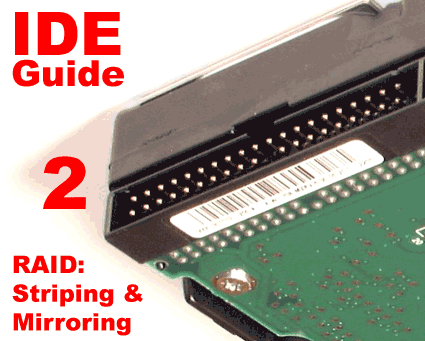IDE Training Course, Part 2: Performance and Data Security with RAID
Introduction
The cry for more performance is as old as the computer itself. Especially when speedy action is called for, the hard drive has more influence than many users realize. Windows offers ways to optimize performance, but there are limits to the physical potential of any hard drive. Using several hard drives simultaneously helps to alleviate this problem.
The technology required for this is known as RAID (Redundant Array of Independent Disk Drives). To put it simply, several hard drives are used jointly so that their data transfer rates can be bundled and data security increased. Depending on the number of drives present, you can choose different modes to fulfill the following purposes: increase data security in case a drive crashes, increase performance, or both. For a functioning drive array, you'll need the right RAID controller that will support the selected mode, in addition to the hard drives. These can be housed in nearly any PC in a free PCI slot, or they may come integrated on the motherboard.
Two things need to be considered in selecting the right hard drives: drive capacity and rotational speed. Today's interfaces correspond exclusively to UltraATA/100 or even UltraATA/133, so they are always fast enough. High rotational speeds allow maximum data transfer rates and minimal access times, but they are accompanied by an increase in both heat and operating noise. RAID can principally be used with any hard drive; this article will focus on the finer points of this technology and discuss all of the important details.
Get Tom's Hardware's best news and in-depth reviews, straight to your inbox.

Patrick Schmid was the editor-in-chief for Tom's Hardware from 2005 to 2006. He wrote numerous articles on a wide range of hardware topics, including storage, CPUs, and system builds.
